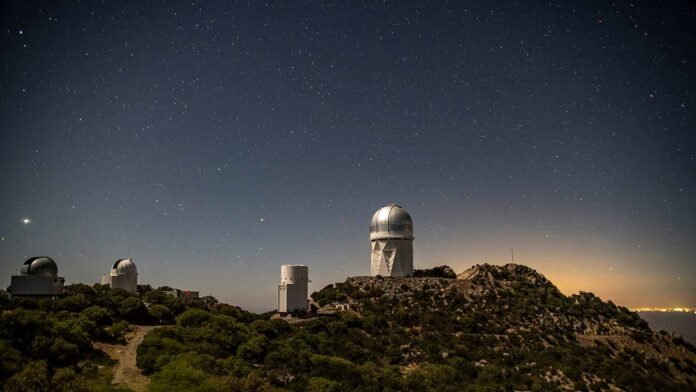A colossal census of the cosmos has more than tripled the number of active black holes known to reside in miniature galaxies and found the biggest haul of middleweight black holes to date.
The survey turned up about 2,500 dwarf galaxies with actively feeding black holes at their centers, up from about 500 known before, researchers report in a paper submitted October 31 to arXiv.org. The team also found nearly 300 new intermediate-mass black hole candidates, an increase from about 70 previous possible detections (SN: 9/2/20).
That’s enough to start studying these black holes as a group, rather than in isolation, says astronomer Ragadeepika Pucha of the University of Utah in Salt Lake City. Such large-scale studies could solve many mysteries of how black holes and their galaxies evolve together.
Every large galaxy seems to center around a supermassive black hole. These behemoths are more than a million times as massive as the sun. But astronomers aren’t sure how the black holes got there.
“It’s a bit of a chicken-or-egg question between galaxies and black holes,” says coauthor Stéphanie Juneau, an astronomer at NOIRLab in Tucson. “Which one formed first? Does one control the other?”
Dwarf galaxies and midsize black holes may be the best places to look for answers. These runts are thought to represent the earliest stages of galaxy and black hole growth, objects that have escaped many mergers with other black holes and galaxies over cosmic time.
“To get a complete picture of the galaxy formation and evolution, we have to understand how these small galaxies evolve and grow,” Pucha says.
Pucha and her colleagues turned to early data from a project at the Mayall Telescope in Arizona to create a mammoth 3-D map of the universe. In its first year alone, the Dark Energy Spectroscopic Instrument, or DESI, survey observed nearly 1.5 million galaxies (SN: 4/4/24). The team searched some of that collection for dwarf galaxies that emit wavelengths of light linked to the hot disk of gas and dust swirling around an actively feeding black hole.
About 2 percent of the nearly 115,000 dwarf galaxies in the study emit such light, the team found. Previous surveys found active black holes in just 0.5 percent of dwarf galaxies.
The team also determined the masses of the black holes in more than 4,000 galaxies, dwarf and not. Then it searched for intermediate-mass black holes, with masses between about 100 and a million times the sun’s (SN: 2/8/17).
“These are very important because they tell us about how the first black holes were formed in the universe,” Pucha says. If black holes start out small and grow through merging with other black holes, then the universe should be littered with these middleweights that represent the in-between stages of growth.
Pucha and colleagues found about 150 confident detections in the DESI data and about the same number of tentative ones, a yield that suggests the first black holes in the universe were relatively lightweight. But the James Webb Space Telescope, or JWST, has also turned up surprisingly massive black holes in the very early universe (SN: 11/1/24). Pucha says that could just mean that JWST hasn’t seen the earliest black holes in the universe yet.
This survey probably found just the tip of the iceberg. The full first-year dataset is expected to be released in March or April 2025, and will contain a lot more galaxies.
Plus, there are undoubtedly more black holes to be found. “They’ve found all the ones that are really bright spotlights,” says astronomer Mallory Molina of Vanderbilt University in Nashville, who is not part of the DESI project. “Even with the most simplistic detection tool we have, [the researchers are] still finding a huge number in this survey. There’s a lot more to be explored.”
Source link


